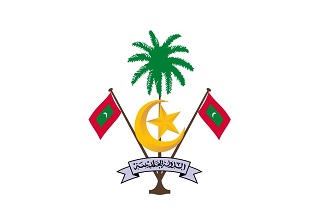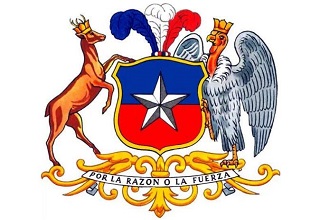Regarding the Inspection and Quarantine Requirements for Exporting Pomelo from China to New Zealand
In accordance with the regulations of the China Customs and the New Zealand Ministry of Primary Industries regarding the export program of fresh pomelo from China to New Zealand, fresh pomelo from China that meets the following requirements will be allowed to be exported to New Zealand starting today.
I. Inspection and Quarantine Basis
(1) "Biosafety Law of the People's Republic of China";
(2) "Law of the People's Republic of China on Import and Export Animal and Plant Quarantine" and its implementing regulations;
(3) "Food Safety Law of the People's Republic of China" and its implementing regulations;
(4) "Measures for the Supervision and Administration of Inspection and Quarantine of Outbound Fruits";
(5) "Export Program of Fresh Pomelo from China to New Zealand" by the General Administration of Customs of the People's Republic of China and the New Zealand Ministry of Primary Industries.
II. Permitted Export Commodity Names
Fresh pomelo, scientific name Citrus maxima, English name Pomelo.
III. Quarantine Pests of Concern to the New Zealand Ministry of Primary Industries
(I) Pests Requiring Targeted Measures
1. Phyllosticta citricarpa
2. Chaetanaphothrips orchidii
3. Diaphorina citri
4. Nipaecoccus viridis
5. Planococcus kraunhiae
6. Scirtothrips dorsalis
7. Tetranychus kanzawai
(II) Pests Requiring Specific Measures
1. Bactrocera correcta
2. Bactrocera dorsalis
3. Zeugodacus cucurbitae
4. Zeugodacus tau
5. Bactrocera minax
IV. Enterprise Registration
Grapefruit orchards and packaging plants exported to New Zealand must be registered with China Customs. Registration information should include the name, address, and registration number to ensure accurate traceability to the orchard and packaging plant if the exported goods do not comply with the relevant provisions of this Announcement.
V. Pre-Export Management
(I) Traceability Management
1. Exporting companies should establish a comprehensive quality management and traceability system to ensure traceability throughout the production, harvesting, packaging, and transportation stages before export.
2. Exporting companies should provide training to personnel involved in export plans before each export season.
3. Exporting companies should only use pesticides approved by the state to control pests of concern to the New Zealand Ministry of Primary Industries.
4. Record relevant procedures and keep records for at least two years.
(II) Pest control.
Grapefruits exported to New Zealand must comply with the import health standards of the New Zealand Ministry of Primary Industries and take pest control measures. China Customs needs to verify whether each control measure (including targeted measures and specific measures) has been implemented in accordance with the relevant requirements of this announcement.
(III) Pre-export inspection and quarantine.
1. Before export, China Customs will conduct sampling inspections on each batch of grapefruits exported to New Zealand. The goods must not carry pests of concern to the New Zealand Ministry of Primary Industries.
(1) If pests are found during plant quarantine inspections, their regulatory type must be determined according to the list of pests of concern to the New Zealand Ministry of Primary Industries.
(2) If the exported goods do not meet the requirements of the New Zealand Ministry of Primary Industries, they may be reprocessed (such as treated or resorted to remove pests) and inspected again. If they do not meet the requirements, they shall not be exported to New Zealand.
2. Before export, the goods must complete plant quarantine treatment to ensure that the goods are not infested by pests.
3. If major non-compliance is found in the exported goods, China Customs shall suspend the export enterprise's qualification to import into New Zealand until China Customs confirms that appropriate corrective measures have been taken.
(IV) Requirements for plant quarantine certificates. For goods that pass quarantine, China Customs will issue a plant quarantine certificate in accordance with the International Standard for Phytosanitary Measures No. 12 (ISPM 12) and fill in the following additional declarations:
1. For pests that require targeted measures, it should be stated: "This consignment was produced and prepared for export in accordance with the agreed bilateral arrangement."
2. For fruit fly pests that require specific measures, it should also be noted: "This consignment was produced and prepared under a systems approach for Bactrocera dorsalis, B. correcta, B. minax, Zeugodacus cucurbitae, and Z. tau."
VI. Disposal of non-conforming products
(I) If live pests or soil, stems, leaves or other plant parts are intercepted in cargo arriving in New Zealand, the New Zealand Ministry of Primary Industries will take appropriate measures.
(II) Disposal of pests intercepted in cargo at ports of entry by the New Zealand Ministry of Primary Industries:
1. Once live regulated pests (except pests that require specific measures) are found in cargo, the following treatment methods may be adopted:
(1) Quarantine treatment (if appropriate treatment methods are available);
(2) Re-sorting to remove infested/infected fruit;
(3) Return (transshipment);
(4) Destruction.
2. If live pests that require specific measures are found in the goods, they will be returned (re-exported) or destroyed.
(III) Handling of major non-conformities:
1. If pests that require targeted measures or specific measures are found in goods at New Zealand ports, the New Zealand Ministry of Primary Industries will notify the Chinese Customs;
2. Depending on the cause of the non-conformity, the New Zealand Ministry of Primary Industries may take any of the following measures:
(1) Suspend the import of pomelos from China;
(2) Suspend the use of a specific measure;
(3) Request the Chinese Customs to suspend the relevant export enterprises' import qualifications.
GACC
July 28, 2025
Pest control measures of concern to the New Zealand Ministry of Primary Industries
I. Targeted Measures
(1) Citrus black spot disease.
Carry out targeted field monitoring, prevention, control, and fruit bagging ( bagging at least 60 days before harvest) ; when fruit comes from infested orchards, wash it with approved fungicides after harvest, grade it, sort it, and remove the infested fruit.
(2) Orchid thrips, citrus psyllids, citrus scale mealybugs, wisteria hip mealybugs, tea yellow thrips and Kanzawa spider mites.
Carry out field monitoring, prevention and control, and bag the fruits (bagging should be done at least 60 days before harvest) ; after harvest , wash , scrub, grade, sort, screen, and remove infected fruits.
II. Specific Measures
(I) Guava fruit fly, citrus fruit fly, melon fruit fly, and pumpkin fruit fly.
Grapefruit exported to New Zealand must be produced in an area of low pest prevalence ( FTD<0.7, where FTD is the average number of fruit fly species trapped per trap per day ) and the following measures must be taken.
1. Field monitoring.
(1) Carry out monitoring at a density of 3 traps /km2 ( for orchards less than 1 km2 , at least 2 traps should be used). Methyl eugenol is used to monitor the fruit fly (Bactrocera dorsalis) and the fruit fly (Bactrocera guava), while Cuelure is used to monitor the fruit fly (Bactrocera cucurbita) and the fruit fly (Bactrocera squash).
(2) Traps should be inspected and replaced every 14 days from the flowering period to the end of the export season.
(3) Any fruit flies found must be identified by trained inspectors (or authorized personnel). Any unidentified fruit flies must have their FTD value counted for the fruit fly with the highest number of monitored fruit flies . Orchards with an FTD value exceeding 0.7 (for the citrus fruit fly, guava fruit fly, melon fruit fly, or pumpkin fruit fly) should suspend the export of pomelos to New Zealand and implement effective corrective measures until the fruit fly FTD value is reduced to below 0.7 within 14 days.
(4) If any fruit fly infestation is found in the fruit after harvest, the orchard concerned shall be prohibited from exporting grapefruit to New Zealand for the remainder of the export season.
2. Bagging.
(1) All grapefruits must be bagged on the tree with double paper bags at least 60 days before harvest . The bagging process must be monitored during regular inspections of the orchard. The bags must remain intact on the fruit and can only be removed at the packing house.
(2) All fruit with damaged bags, whether in the orchard or at the packing house, must be removed and not exported to New Zealand.
(II) Citrus fruit fly.
1. Field monitoring.
Grapefruit exported to New Zealand must be produced in areas with zero pest prevalence and field traps (sticky fly balls) should be monitored as follows .
(1) For orchards with a history of infection: 50 traps / km2 (for orchards with an area of less than 1 km2 , no less than 30 traps).
(2) For orchards with no history of infection: 10 traps / km2 (for orchards with an area of less than 1 km2 , no less than 5 traps).
(3) Traps should be inspected and maintained every 14 days from flowering to the end of the export season.
(4) All suspected infected fruits ( including fruits picked up from the ground ) must be cut open and sampled to check for the presence of citrus fruit fly larvae.
(5) All fruit flies found must be identified by trained inspectors (or authorized personnel).
(6) If any stage of the fruit fly is found in an orchard, the orchard will be prohibited from exporting grapefruit to New Zealand during this export season.
2. Bagging.
(1) All grapefruits must be bagged on the tree with double-layer paper bags. Bagging must be completed at least 60 days before harvest. The bagging process must be monitored during regular inspections of the orchard. The bags must remain intact on the fruit and can only be removed at the packaging plant.
(2) All fruit with damaged bags, whether in the orchard or at the packing house, must be removed and not exported to New Zealand.



